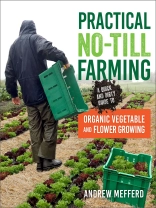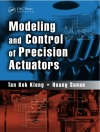Do less, produce more, and grow soil that feeds crops using chemical-free, organic no-till methods
Andrew Mefferd, veteran farmer, author of The Organic No-Till Farming Revolution, and editor of Growing for Market magazine, brings you the ultimate guide to getting started with no-till farming.
Yet there are many ways to do no-till, including mulching with compost, cardboard, straw, silage tarps, and more. Plus plenty of conflicting advice on how to get started.
Practical No-Till Farming is here to help, sorting the wheat from the chaff and the horse manure from the plastic mulch. Coverage includes:
- How to assess your farm for no-till options considering climate, soil, and crop selection
- Assessment of common no-till methods, including pros and cons, materials, and the relative costs
- A decision-making matrix for choosing the most appropriate methods for your context
- How-to for each no-till method, including what to do and when
- Dealing with bindweed, symphylans, and other difficult weeds and pests
- Maximizing productivity of no-till beds
- Special coverage of both organic vegetable and flower no-till market farming
Ideal for small-scale growers everywhere, Andrew Mefferd, veteran farmer, author of The Organic No-Till Farming Revolution, and editor of Growing for Market magazine, brings you the ultimate guide to getting started with no-till farming.
Table of Content
Part 1: The Why of No-Till
INTRODUCTION
Who This Book Is For
Tilling Was Once the Only Answer
Enthusiasm and Skepticism for No-Till
Becoming a No-Till Farmer
Defining No-Till: What Counts as Tillage Anyway?
New Adaptation for Old Methods
The Promise of No-Till
THE POWER OF THE SOIL
Putting a Face on the Soil
Soil: Where the Microbe Magic Happens
Taking Care of Our Livestock
Soil Life Drives the Success of No-Till Systems
Soil Testing
Healthy Soil Can Lead to Healthier Farmers
FARM SIZE
Farming as a Career
NO-TILL: A GATEWAY METHOD
Evolution of Your Farm
Small Can Be Beautiful
NO-TILL VS. TILLAGE
Tillage: The Agricultural Reset Button
Tillage: An Ancient Practice We Might Want to Avoid
THE DISADVANTAGES OF TILLING
Breakdown in the Nutrient Cycle
Weeds
Hard Work and Time-Consuming
Physical, Chemical, and Biological Disadvantages
THE ADVANTAGES OF NO-TILL
Advantages for the Environment
Fungus: The Perennial Roots of the Soil
Soil and Water Can Do Their Jobs
Increase in Organic Matter
Advantages for Growers
THE DISADVANTAGES OF NO-TILL
Fields Are Slower to Warm in Spring
Systems Can Take Some Time to Become Established
Some Methods Are Hard to Scale Up
Some Pests Can Flourish in High Residue
Perennial Weeds
Part 2: The How of No-Till
GETTING STARTED: PRINCIPLES, TECHNIQUES, AND TOOLS
Start with a Soil Test
Clearing the Deck: Getting the Soil Ready
Establishing New Fields
Sod Bustin’, No-Till Style
Reduce the Weed Seed Bank First
TARPING
Occultation
Solarization
Tarp Timing
Decomposition Rates
IT’S ALL ABOUT THE MULCHES
Non-Decomposing Mulches
Applied Organic Mulches
MULCH GROWN IN PLACE
The Roller/Crimper Method
Roller/Crimper Cons
Winter-Killed Cover Mulch Crops
Planting through a Cover Crop Mulch
Which Crops Work Best in the Roller/Crimper System?
GETTING STARTED AND CROPPING STRATEGIES
Composting in Place
Compost as Mulch
Ways to Improve Land and Exhaust the Weed Seed Bank
CROPS TO FOCUS ON
GOING FROM CROP TO CROP
Dealing with Residue
Planting
Flowers in No-Till
CASE STUDY: GROWING HEMP
APPENDIX
NOTES
BIBLIOGRAPHY
INDEX
ABOUT THE AUTHOR
ABOUT THE PUBLISHER
About the author
Andrew Mefferd is the editor of Growing for Market magazine and author of The Organic No-Till Farming Revolution and The Greenhouse and Hoophouse Grower’s Handbook. He spent seven years in the research department at Johnny’s Selected Seeds and worked on farms across the US before starting his own farm in Cornville, Maine.












